Here's a new lesson that we've just added to Course B, to help you develop your bow division using and A major scale pattern:
You can also find a library version of the piece, complete with backing track and piano accompaniment, here:
Click here to have a listen!
If you're just starting to read music for the first time, you might come across these symbols which are especially for string instruments...
This is called a down-bow ...

... and this is called an up-bow:
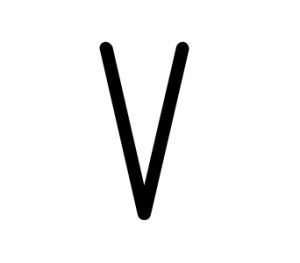
Here's a newly updated lesson from our Starter / Musical Fundamentals courses, which explains everything you need to know:
Here's a short welcome message from our director Simon Hewitt Jones, for learners joining us for the upcoming Autumn Term, starting 20th September!
Not yet enrolled for the upcoming term? Click here to read more about the options available this term! Or click here to browse all of our courses.
If you’ve ever found your fingers have drifted out of tune without you realising it, then you’re falling into the same trap as the boiling frog!
Do you know the apocryphal story? It’s not very nice, so if you’re a frog lover, brace yourself…
A scientist places a frog in a pan of boiling water, and the frog immediately jumps out again, because it feels the heat! It reflexively understands that will be boiled alive if it doesn’t escape straight away…
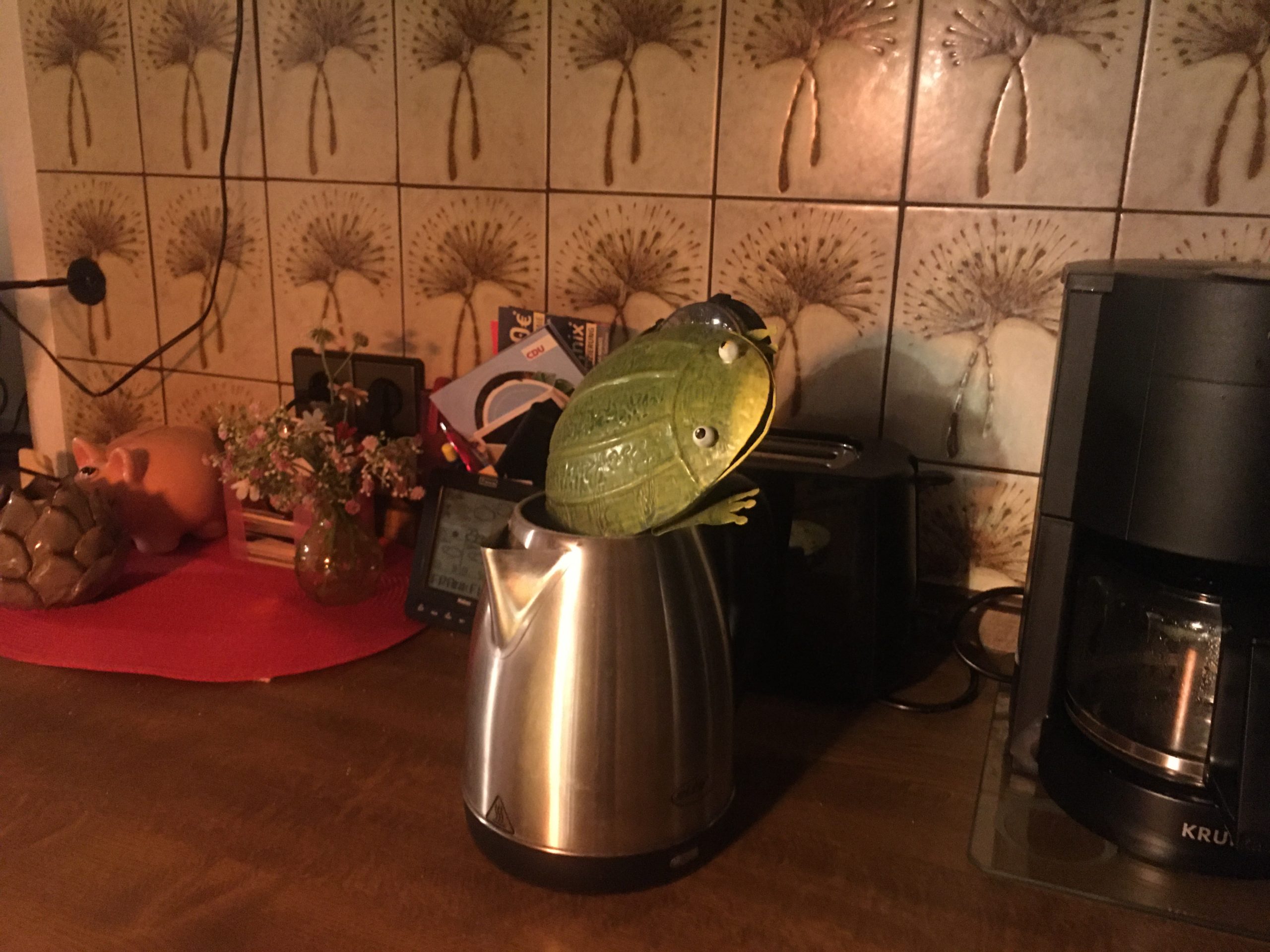
The scientist then puts the frog in a pan of cold water, and sloooowly heats up the pan, until the water is boiling. The frog doesn’t realize that the water is heating up until it is too late...
Poor frog!
With your left hand finger placement, don’t be the boiling frog!
If you’re only ever thinking about the next finger placement, you’re not going to notice what’s going on around you … just as the frog didn’t notice that the scientist was heating up the pan of water!
Be aware of what's going on around your fingers
The thing is, good intonation requires not only a clear sense of what the next pitch is …
… but also an objective awareness of where your hand is in space and time!
Here’s a useful exercise that you can apply to any scale, piece, or indeed any other piece of music that you might be looking at in your practice!
If you do this slowly and carefully, whilst listening deeply to what you are playing, carefully imagining the sound of the next note each time, then soon you will be playing more in tune.
But as you do this, remember what happened to the boiling frog … make sure to check your hand and arm position every time you change note!
Then you'll always be aware of what is going on around your fingers ... in particular, whether your hand and arm position is correct!
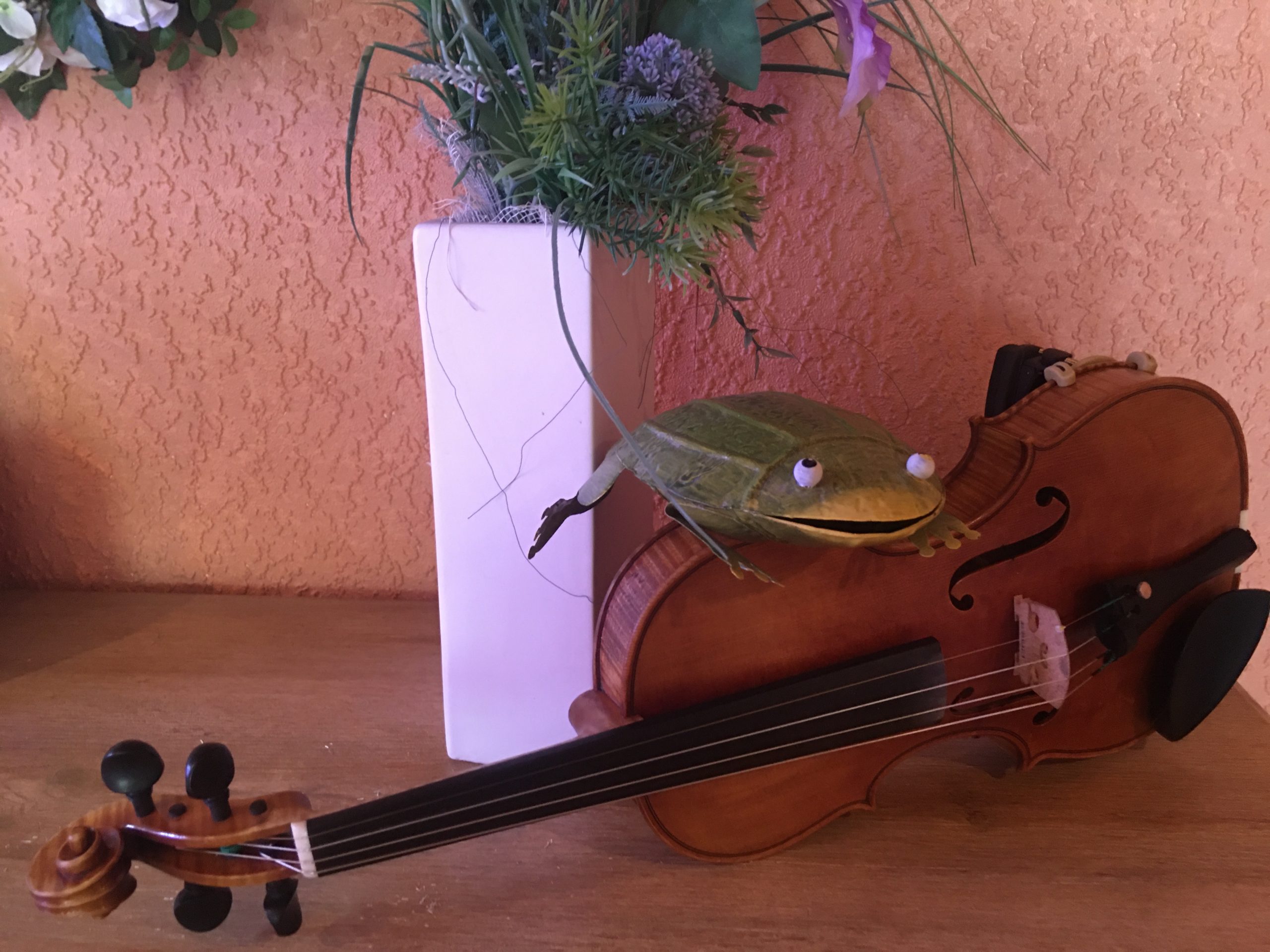
One of the things you’ll always hear us say as we start people off on the violin for the first time – especially in our Violin Fundamentals classes - is "check your checklists"!
This is because checklists are superb tools for remembering complex sequences of tasks. And there are few things that require more complex sequences of tasks than playing the violin!
Even if you completed a set of actions many times before, what you do will be significantly more secure and reliable if you use a checklist – even if you’ve done the task thousands of times before!
Novice or Expert - Eliminate More Mistakes!
A classic example of this is how pilots use checklists to manage complex sequences of tasks when flying planes.
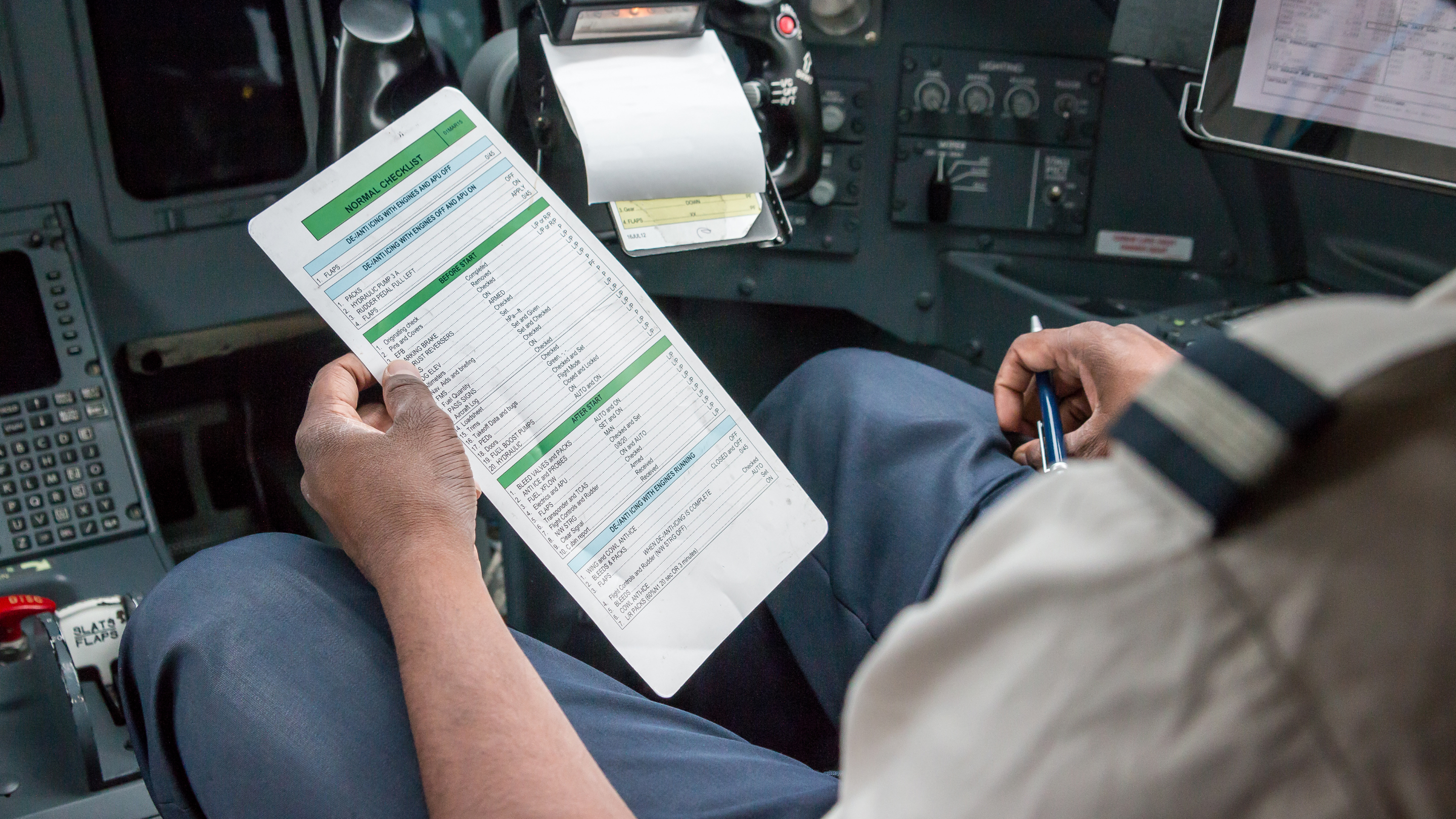
It doesn’t matter how experienced the pilot is – they still use a checklist. It just eliminates the possibility of being distracted for a moment, and accidentally missing a step.
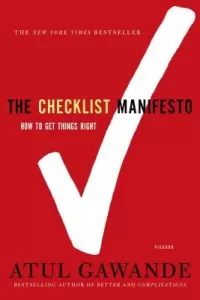 (If you’re interested in learning more about this topic, we highly recommend The Checklist Manifesto by Atul Gawande).
(If you’re interested in learning more about this topic, we highly recommend The Checklist Manifesto by Atul Gawande).
Handle Complex Tasks With Ease
When playing the violin, whether you’re a beginner or an advanced player, you are dealing with a lot of simultaneous complexities.
For this reason, checklists are a useful – perhaps even essential! – tool for ensuring that your technique is balanced and consistent at all times.
Here are two checklists we use almost every week at ViolinSchool, to help learners build up consistency and reliability in their violin playing technique:
The Body Checklist (for good posture)
This list is a reminder of how your body should be, before you pick up the violin.
Take a moment to think through each part of the body, to make sure that it is positioned exactly how it needs to be, and that it is relaxed and free.
Do you have good body posture, before you pick up the violin?
The Right Arm/Hand Checklist
This checklist is a reminder of how you need to be positioning your bow arm and hand, in order to give yourself the best chance of creating a smooth, clear and beautiful sound at all times.
The technical topics that are necessary to make best use of checklists include the core bow strokes, bowing technique, and tone production.
They're covered in detail in our Violin Fundamentals program for beginner violinists.
The new academic year is about to begin, and that means it's time for our new Lessons and Coursebooks to be unleashed upon the world!
Over the summer, we've been updating many of ViolinSchool's courses ... and of course our printed coursebooks too!
The new (2021/2022) editions of our Coursebooks will start shipping in September 2021. If you're already enrolled at ViolinSchool for the Autumn Term onto one of our courses, then yours will be in the mail to you before the start of term!
If you're not enrolled at ViolinSchool, you can still order Coursebooks! They're now available to pre-order here:
Livestream & Music Video
The Violin Orchestra travelled to Edinburgh last week, to perform at the Edinburgh Fringe Festival on Saturday 7th August.
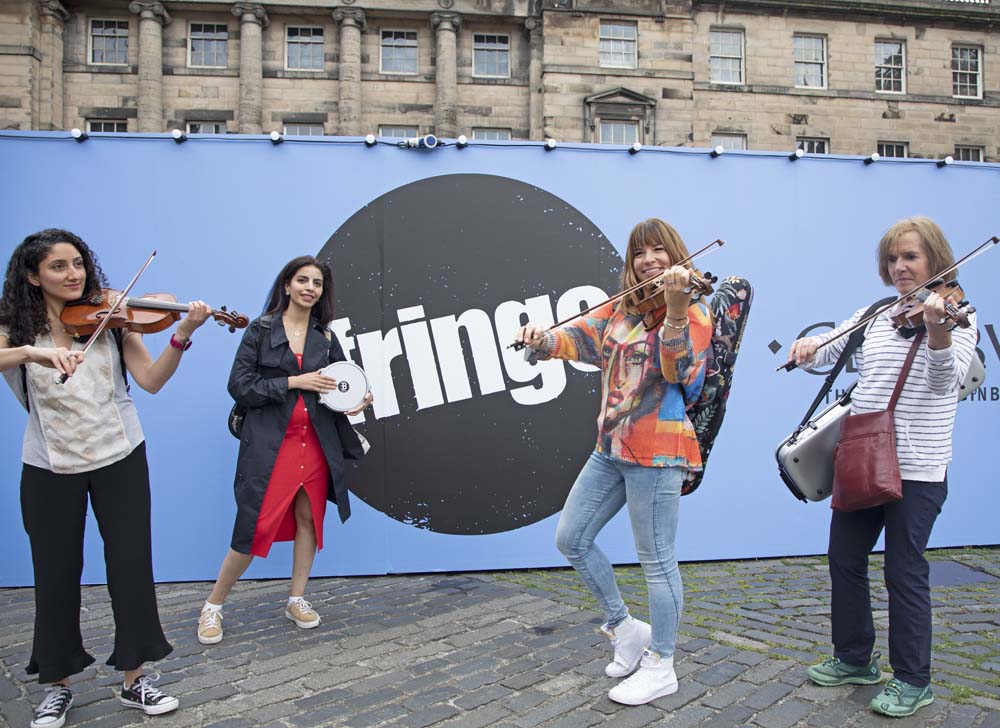
The Violin Orchestra is a unique orchestra for violinists of every age and level.
Because we use our own musical arrangements for each project, it’s possible for anyone to join in – whether you are a beginner violinist who has only been playing for a few weeks, or an advanced player with a lot of experience of playing in orchestras!
Just choose the part that’s the right level for you.
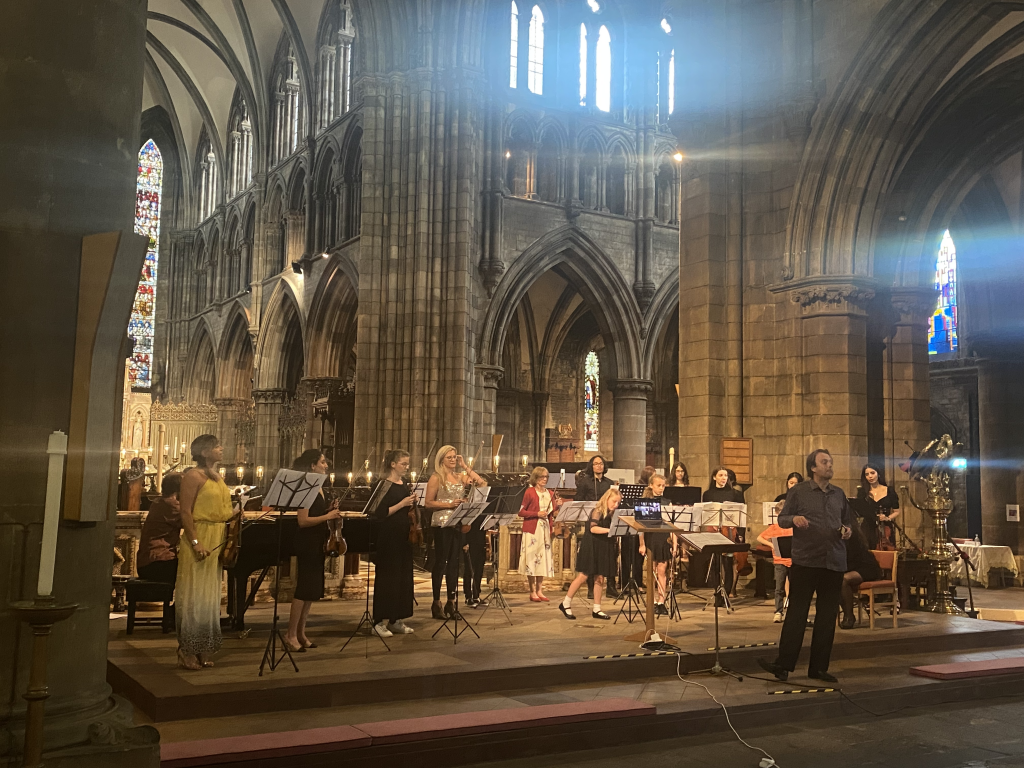
The Violin Orchestra concert was hosted by St Mary's Cathedral in Palmerston place, where the Orchestra repeated the program they had played in London a few weeks earlier:
The concert was livestreamed on YouTube, so it could be watched from anywhere in the world.
Several Violin Orchestra members who couldn’t travel to Edinburgh also joined in with the concert remotely, by connecting through a dedicated zoom link and appearing with the orchestra in real time.
The Edinburgh Fringe Festival is a unique event where, in non-pandemic times, performers of all types from all around the world descend on Edinburgh for three weeks of organized chaos! Creativity comes first ...
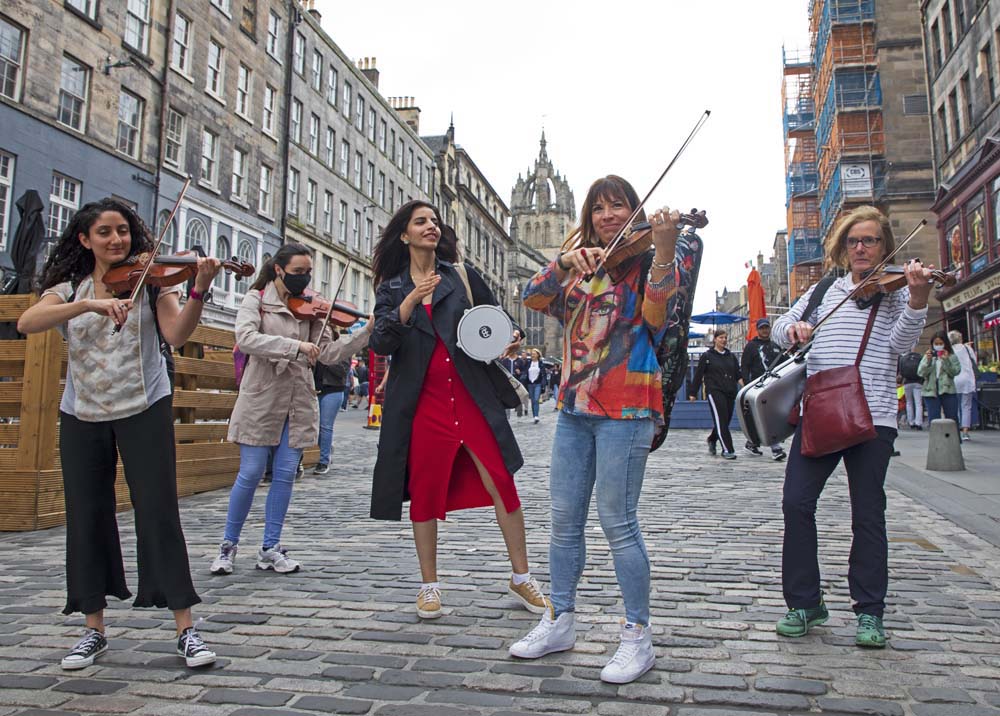
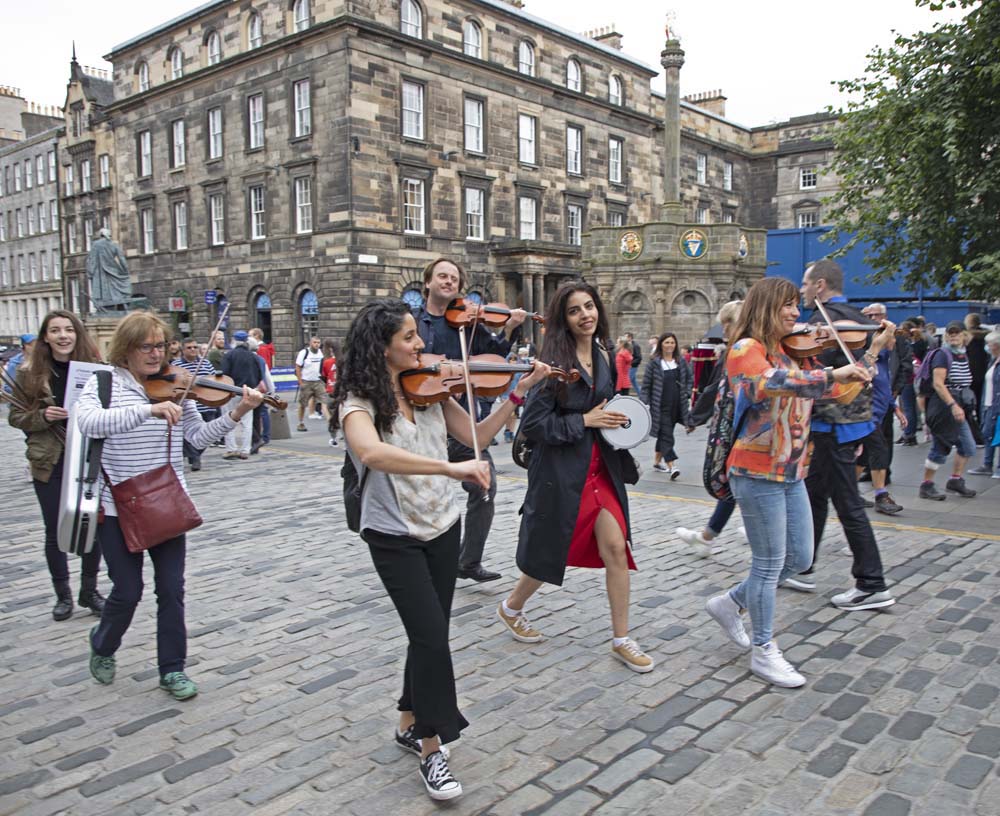
Groups traditionally promote their concerts on Edinburgh’s ‘Royal Mile’ (high street), which is where a group of violinists from the Violin Orchestra were spotted by Channel 4 News, for this segment about the festival:
Soon May the Wellerman Come
The following day, the orchestra traveled east from Edinburgh, along the Lothian coast, with coach driver extraordinaire (and theatre technician) Mark Fleming from Coach Hire Edinburgh.
“I brought my drone” were his first words as the orchestra boarded the bus… and indeed he had! We ended up with some extraordinary drone footage of the orchestra playing at locations including Leith, New Haven, and Musselburgh Harbour…
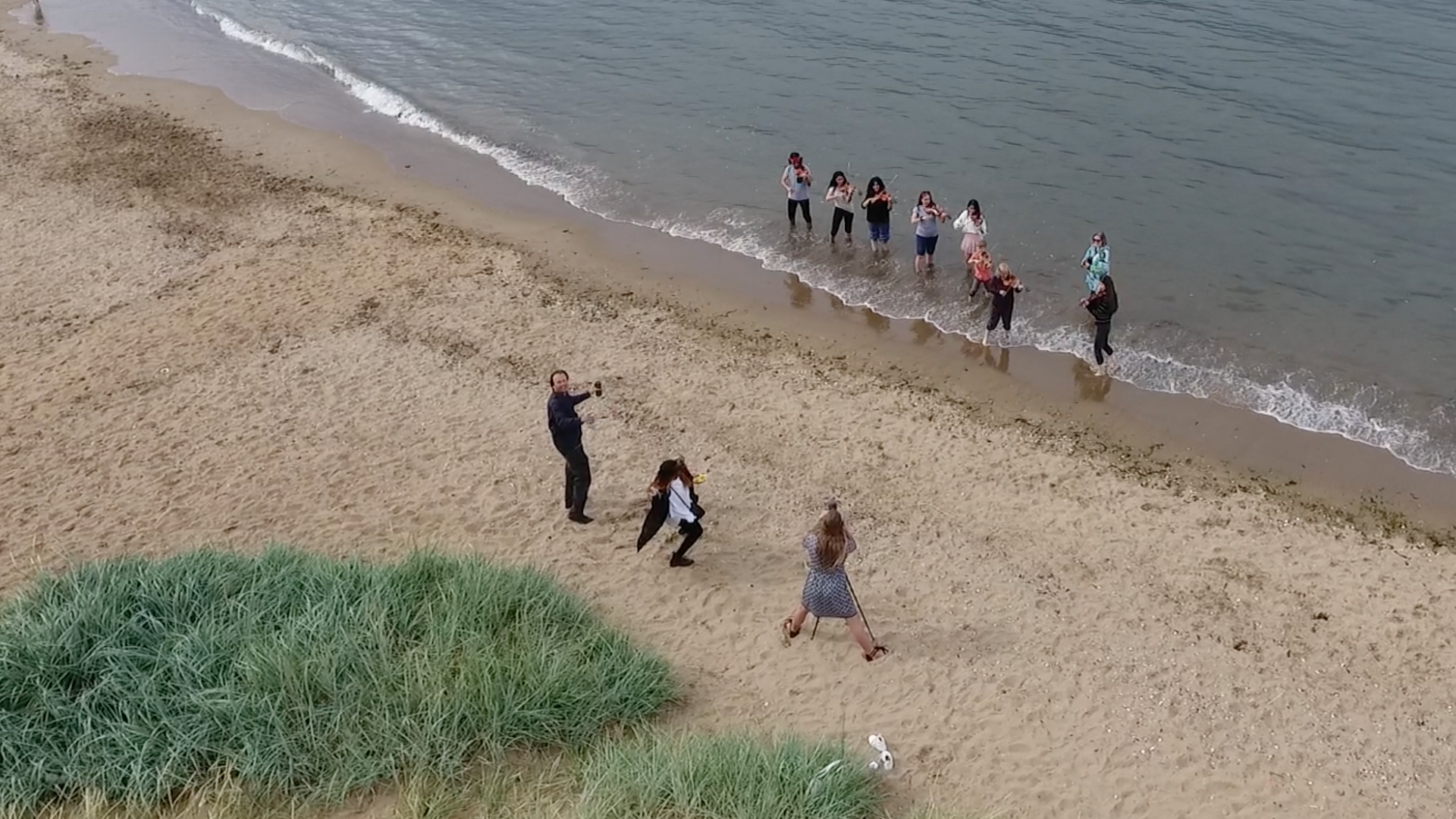
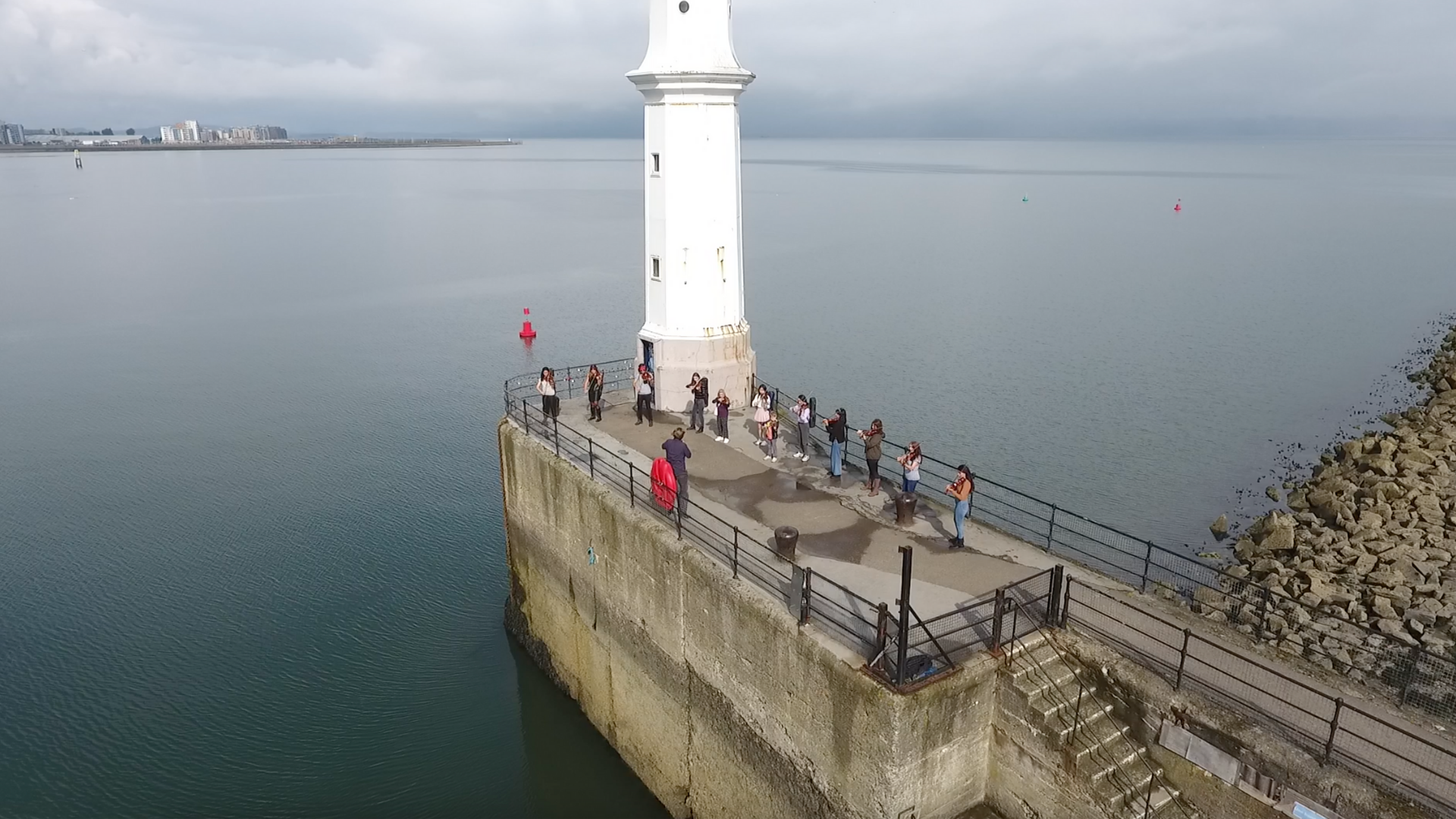
Wellerman is the latest in a series of music videos that the Violin Orchestra is creating for ViolinSchool‘s YouTube channel.
You can see our latest video, Abdelazer, and enjoy more videos from ViolinSchool and the Violin Orchestra here:
https://www.youtube.com/violinschool
We‘ll be putting together video highlights of the trip, so watch this space!
And if you’re in Edinburgh… Maybe see you in 2022?
Find out more about the Violin Orchestra and how you can join in and take part!
https://www.violinschool.com/violinorchestra/
ViolinSchool‘s blog is returning for the 2021/22 season. This will be the place to find all the most recent updates on ViolinSchool.
Our new feature articles and videos will also be published here, before moving across to our learning center or YouTube channel.
If there’s something you’d particularly like us to write about, Please send in your suggestions!
And don’t forget to check back regularly to see what’s new.
We’re excited to get started with the new academic year… If you haven’t already registered, come and join us with a full enrollment or a Term Pass If you’re an adult learner.
Or if you are a parent and your child is learning, take a look at our newly updated children’s course in London (or contact us to learn about our remote learning trial if you are not based in the UK!)
Find out more about all of ViolinSchool's courses here:
https://www.violinschool.com/courses/
Or read more about our London school here:
https://london.violinschool.com/
We look forward to seeing you!
Earlybird! Re-Enrolment now available for a limited time
Save $70 / €50 / £50 when you enrol today!
If you are re-enrolling at ViolinSchool for Autumn Term, read on to see the options that are available to you as a continuing learner!
Earlybird Enrolment has now opened for Autumn (Fall) Term 2021, and you can save up to $70/£50 on all re-enrolments, only until 11th July.
(You don't need a discount code this time - the reduced rate is automatic if you register online by Sunday 11th July).
Ensembles begin mid September
Term Time: Monday 20th September to Saturday 4th December
Half Term: 26th-31st October
Christmas Concert: Saturday 11th December
If you're nearing the end of Course A, B or C, you feel comfortable with the topics in your current course, and are well on track with your progress this term, then you may wish to move on to the next course in the sequence.
You can find the info and registration pages below:
If you have completed Course D, you are eligible for a Term Pass, which gives you access to all workshops and ensembles.
In the future, we will be extending our core training sequence beyond Course D. As a continuing learner, you will be given complimentary access to these new core training courses as part of your Term Pass, at no extra cost.
You are also welcome to repeat Course D as many times as you wish.
If you feel like there are topics and materials from your current course that you haven't mastered yet, then we'd recommend repeating your course.
We regularly refresh class materials, so although the topic sequence will stay the same, you'll enjoy a combination of new activities and repertoire that you haven't tried before, as well as pieces and technical exercises that you already know.
Available until Sunday 11th July
If you're not planning to join a full course next term, but would still like to stay connected to the ViolinSchool community and have continued access to learning and practice resources, a low-cost alumni membership option is available so that you can remain a member of the school once your current enrolment ends.
(This is also a great option if you're taking some time out from learning violin, or you're unsure of your short term plans, but want to keep practising regularly and/or continue learning in the near future!)
You'll have continued access to:
This usually costs $39 or £29 per month, but until Sunday 11th July you have the option of joining us at an 'Alumni' rate of USD $13 / EUR €11 / GBP £10
Alumni membership is offered to you exclusively because you have completed at least one ViolinSchool course. The cost will stay the same for as long as your subscription remains active. You can cancel the membership at any time if you find you are longer need it.
You can register for Alumni membership any time before Sunday 11th July, here:
Register for Alumni Membership
The Earlybird discount on all courses is available now, until Sunday 11th July 2021 (the day after the first concert).
If you have any questions about the course sequence or would like to talk to us about the best next steps for your learning, please do not hesitate to get in contact with us at [email protected].
With best wishes,
The ViolinSchool Team
There are three main types of minor scale: natural minor, melodic minor and harmonic minor. You can think of them as three different 'flavours'!
Each type of minor scale uses a different note pattern, so it has a distinct, recognisable sound. You will need to use different finger patterns to play these scales on the violin.
**********
In the natural minor scale, you just play the notes that are indicated by the key signature. So for E natural minor, all notated Fs become F#s because there is one sharp in the key signature.
But all other notes stay the same:

**********
In the harmonic minor, the 7th note of the scale is sharpened. This means that it goes up by one half-step (semitone), compared to the equivalent note in the natural minor scale.
So in E harmonic minor, the seventh note of the scale would be a D# instead of a D:

**********
The melodic minor scale pattern is a bit more complicated because the 6th and 7th notes of the scale are raised by one half step (semitone).
Traditionally, musicians play this scale by raising the 6th and 7th on the way up, but then reverting to the natural minor scale on the way down.
For the E minor melodic scale, this means there are no extra sharps on the way down, apart from the F# that is already in the key signature.

**********
We get this question a LOT at ViolinSchool!
But, honestly...
Who can know?!
As the saying goes, How long is a piece of string? ... it's kind of impossible to know the answer to this question, because it depends on so many factors that are personal to YOU.
What's much more important (and what we're focused on when you're enrolled at ViolinSchool) is whether:
a) you're gradually getting better and better at playing the violin
and
b) you're having fun and enjoying it!
Are those not the most important things?
(Also, call us lazy, but ... we want you to achieve the best possible results with the minimum amount of effort! Ha!)
So let's upgrade the question...
Aha! Now we're talking! 🙂
Now, that's a big question, and the answer is different for every person. But as you work through each area of skill with your teacher or coach, we can find answers to this together.
Remember, the right answer will be different for everyone, because we all go through different 'phases' or 'seasons' of learning, so your practice routine will change in different ways over the years.
But we can't look for changes and improvements until we're fully aware of what we're doing right now.
So be mindful of your existing violin practice routine, and start to reflect on what is working and what isn't working for you.
Here's a tool you can use to do exactly that:
(click to download - make sure you're logged in to ViolinSchool)
For an explanation of the different categories, check out the 'Practice Menu'.
Now please ... before you print the doc ...
1) Don't overthink this! Just scribble down a few notes about what you've played or practised this week. You can take a deeper look at the details later.
2) Use any format to make a note of what you played this week! It doesn't *have* to be the document above! You could even just scribble a few notes on the back of an envelope. Whatever works.
Only spend 2 minutes a day on this exercise! Just enough to make you start thinking about what you're doing in your violin practice, and why.
In the G minor scale, we use Finger Pattern 2 on the G string, then Finger Pattern 1 on the D string, but with the 1st finger extended back.
Without using the bow, let's learn how to tap the 1st, 2nd and 3rd fingers in the right place ... first on your arm, and then on your violin!
Check your hand shape before you start! These finger patterns will help you develop your left hand technique and make your fingers fast and strong!
Here is a piece of music in which the tune comes back again and again. In bars 13 to 16, you can create your own melody in a similar style!
B sits on the middle line and the tail can go either up or down. B sits next to Open String A on the stave, and is played with the 1st finger.
These two songs are based on the scales of G and D. Play them through without stopping, and remember to keep a steady beat throughout!
A syncopated musical rhythm, where a very short note is followed by a long one, is called a scotch snap. Here are some rhythms featuring the scotch snap for you to practise!
Learn notes quickly by tapping different parts of your body with both hands. Each part of the body represents a different note!
We place the fingers on the strings of the violin to create the notes. Here are some 'finger numbers' and grid patterns that you can use to make it easier!
This uplifting tune has become one of the most popular melodies on earth … play it with lots of expression, and don't forget the dynamics!
Download it from the library page:
This exciting tune from Vivaldi's 'Four Seasons' needs to be played quite fast!
Download it from the library page:
Or view the lesson in Course B:
Check these sums carefully ... there’s a mixture of plus and minus symbols!
